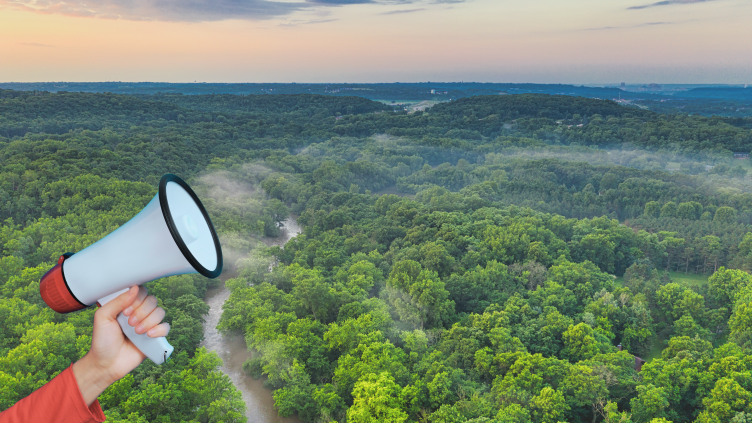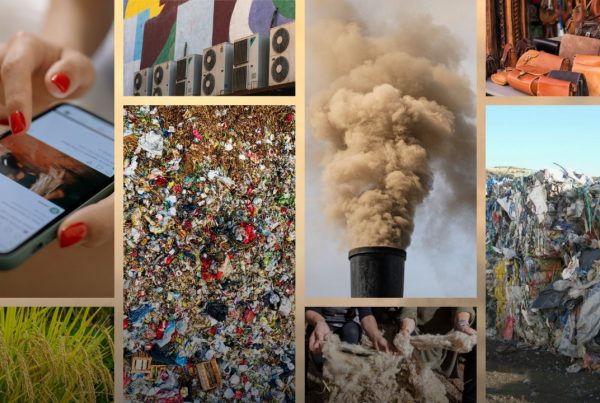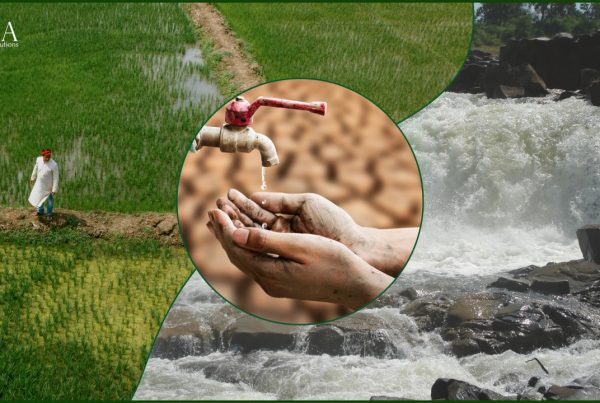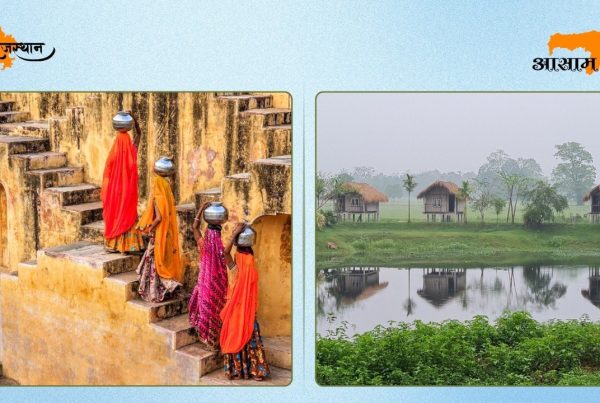Global warming and its impacts are no longer a distant threat – they are reality we are living through, some of us bearing the brunt of it more than others. Climate change is not just an environmental issue but a socio-economic crisis unfolding before us, impacting every aspect of our lives.
Despite the far-reaching implications of climate change and it now becoming part of the public’s vocabulary in some parts of India, there remains a significant gap in both people’s understanding and response to it. According to a survey, 54% of Indians are either unaware of or unfamiliar with climate change. This knowledge gap is particularly alarming, given India’s vulnerability to climate impacts – the Global Climate Risk Index in 2019 ranked India as the seventh most vulnerable country in the world to climate change, with nine of our states listed among the top 50 most at-risk regions globally. In this context, confusion can fuel misinformation, leading to delays in action and often an unwillingness to support necessary interventions. Here, communication must rise to the challenge, not only by defining and simplifying the science of climate change but also by conveying this in a way that inspires action.
Clear, reliable, and relatable messaging is needed to bridge the gap between what we know and what we’re doing about it.
The Complexity of Climate Science
While one of the main challenges in addressing the gap in public knowledge on climate change is the complexity of the science involved, there is another part of the problem – how it is often communicated.
In India, climate change and environmental issues are often underreported in mainstream media. While media coverage tends to focus on immediate events – floods, cyclones, or heatwaves – it often overlooks the long-term repercussions of these or the fact that they are happening more often and with greater intensity. There is still a lack of clear communication and the resultant understanding in the public of the pressing nature of the crisis. For example, during the record-breaking heatwaves in India this year, media coverage concentrated on the immediate health crisis, with hospitals reporting a surge in heatstroke cases and schools in Delhi shutting down. However, the broader conversations about why these heatwaves were happening and what they mean for water security, agricultural output, or even urban planning remained largely absent. While these are sometimes difficult ideas to convey – focussing on the problem beyond the here and now, beyond how it’s impacting our own lives – it is very important to do so in order to convey the urgency of the challenge. In the case of the heatwaves, once they subsided, so did the coverage, leading to hardly any concrete actions being taken on the ground to protect us when it will inevitably be the hottest summer on record, again.
This pattern extends to several slow-burning and out-of-sight, out-of-mind crises like groundwater depletion, land degradation, and biodiversity loss. These issues often don’t grab headlines in the same way as sudden disasters, but their impacts will be felt by generations to come.
Bridging the Knowledge Gap: Framing Climate Action
Climate science is complex yes, but that’s where good science communication can come in and simplify it. By breaking down complex concepts into simpler infographics and visuals, we can make the science of climate change more accessible. Imagine a simple diagram showing how rising temperatures affect local weather or an interactive map illustrating the impacts of climate on a landscape. When people see how climate change will affect their daily lives, they’re more likely to feel the urgency to act. While a lot of these tools do exist, they are not widely promoted amongst the general public or are not able to engage their attention for long enough.
For meaningful climate action, it’s crucial that people begin to connect the dots between immediate events and their broader environmental implications. When individuals see the tangible effects of climate change on their daily lives, they are more likely to engage and take action. One such example is the ongoing water crisis in Bengaluru, which gets overshadowed by the short-term effects. However, if we shift the focus on to the water mismanagement, pollution and degradation of wetlands, and climate-induced stresses on water resources that the crisis represents, we can foster a shift towards sustainable management practices, not just by the authorities but also the public.
Highlighting Solutions: From Helplessness to Hope
Climate change can seem overwhelming, even to those of us who have to think about it every day. Given the magnitude of the problem, it is natural to feel helpless at times. This is even more amplified for the public that might understand the crisis but for whom there is a lack of clear, actionable advice on how they can contribute to solutions. Whether their individual action will even make a difference. When people don’t know what they can do or how, they are likely to feel demotivated.
Presenting solutions alongside the problem shifts the narrative from helplessness to hope. We need to highlight that concrete actions must be taken by individuals, businesses, and governments to tackle the climate crisis. Only when all of us work together, will we be able to make a difference. However, different audiences need to be reached through different types of tools and messaging to covey the same idea. We need to always be mindful of socio-economic and demographic dimensions of our audience when interacting with them.
One effective strategy is to use public campaigns that simplify the message and bring about behaviour change. For example, India’s “Har Ghar Jal” (Every Home a Water Home) campaign, focused in rural India, advocates for access to clean water and educates people on water conservation practices. By encouraging simple actions like rainwater harvesting and efficient water use, the campaign helped communities evolve as environmental stewards and directly address water scarcity. Similarly, the “Mission LiFE” (Lifestyle for Environment) initiative encourages sustainable living through energy-efficient habits, waste reduction, and eco-friendly choices. By presenting clear steps like using public transportation or reducing plastic use, these campaigns help individuals see the immediate impact of their actions. This was a campaign for both urban and rural audiences and as such presented ideas for sustainability through different means.
Workshops also play a crucial role in bridging the gap between scientific data and practical action. Whether they are for raising awareness amongst school kids or training the next generation in Green Jobs, they are an extremely effective tool for science communication. The “Green Skill Development” programme launched by the Ministry of Environment Forest and Climate Change (MoEFCC) focuses on developing a skilled workforce by bridging the gap between technical knowledge and real-world application for sustainability.
In this digital age, social media offers opportunities for rapid dissemination and interactive engagement, which are effective for climate communication as well. Visual storytelling, interactive content, and relatable narratives are essential for drawing in large audiences, particularly younger viewers, who may otherwise feel disconnected from traditional climate discussions. Though in a country like India, social media and digital outreach may not be accessible to everyone.
Digital platforms can also be critical tools for knowledge dissemination for many sections of the public. The Climate Action Tracker run by two international nonprofit organisations provides updates on global and national climate policies and their impacts, including specific data on India’s climate commitments. By providing insights into how various sectors are addressing or exacerbating climate change, these platforms help clarify how various actions contribute to the broader goal. This transparency can help individuals and organisations understand their role in the global effort to combat climate change and motivate them to take more informed and effective actions. However, such platforms don’t have reach beyond those of us who work in the sector. How do we make these platforms more mainstream?
Moving from Awareness to Action
There’s no formula for perfect climate communication – just like the evolving nature of climate science, it’s an ever-evolving process that requires adaptability and creativity. But one thing is for certain, effective communication is more than just spreading information, it’s about raising awareness and inspiring action, without sensationalising. By making climate science relatable and highlighting actionable solutions we can drive real-world change. It’s about making every conversation count, turning knowledge into action, and driving collective efforts to combat climate change.
So, what can you and I do? Each one of us has a critical role to play, especially those of us who work in the sector. It is our responsibility to communicate better, which we often forget. Educate yourself and those around you about climate change and climate-friendly practices, advocate for policies that support sustainability, and lead by example in your daily life. Together, through informed communication and proactive engagement, we can bridge this communication gap. We can help move the needle towards collective climate action, where every citizen is informed and willing to contribute towards climate mitigation and adaptation, not just for themselves but for the collective good.






